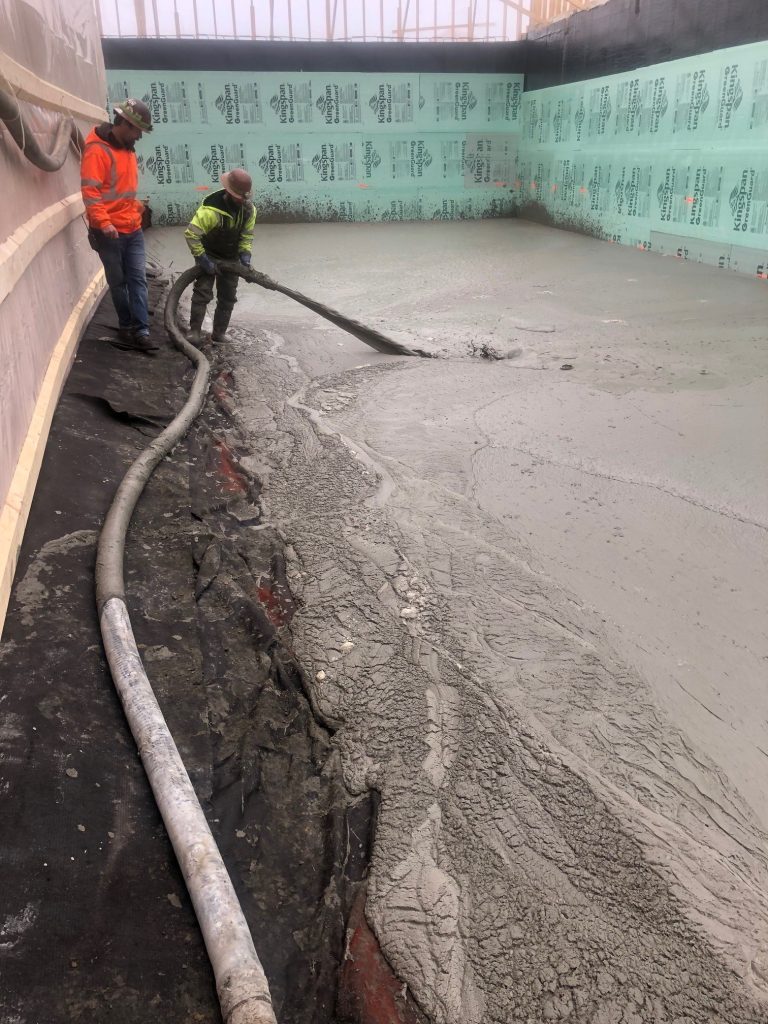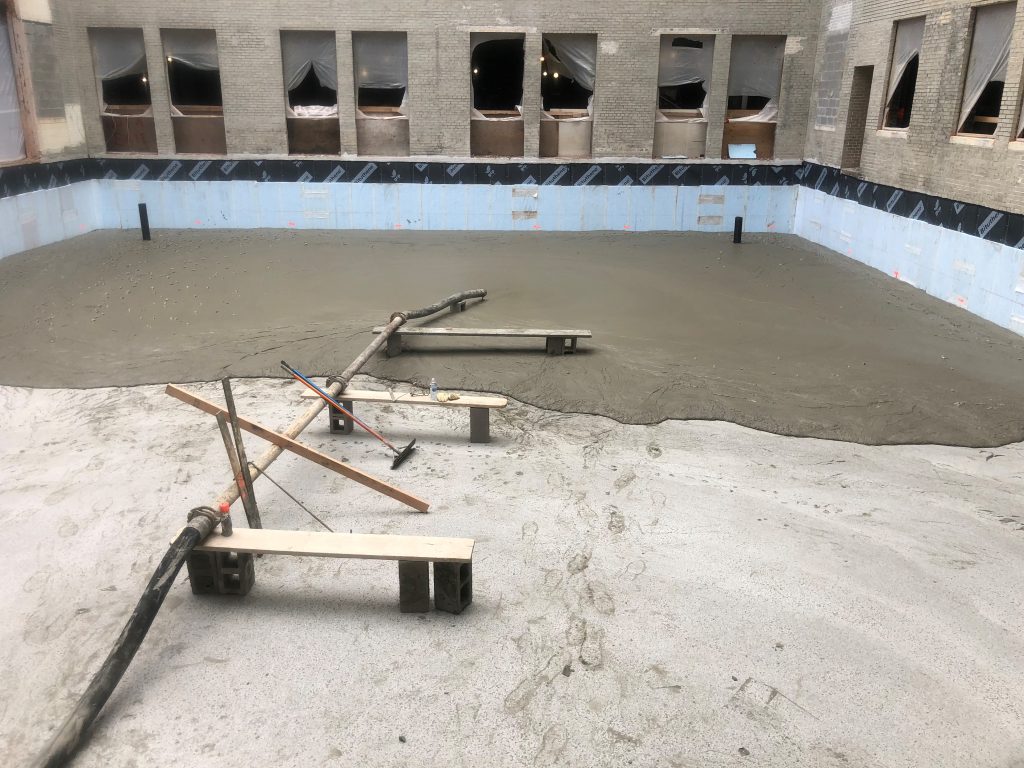Cellular concrete has been used for more than forty years in insulating roof decks, however, there are differences between cellular concrete and the expanded aggregate concrete that is more commonly thought of for these types of projects.
The two major types of insulating concrete roof decks are those made using cellular concrete (preformed foam) and those made with expanded aggregate concrete (perlite or vermiculite). Both of these insulating concretes share portland cement and water, but there are major variances in their handling and final product properties. Both are utilized in roof deck applications, but they are two separate materials.
To create cellular concrete, a pre-formed foam with a thick, creamy consistency that resembles shaving cream is mixed with a cement/water slurry. Cellular concrete has a water-to-cement ratio (0.50 to 0.60) that is comparable to normal concrete.
All the requirements for the optimum roof deck insulation material are found in lightweight insulating cellular concrete. Cellular concrete roof decks offer a favorable slope-to-drain, a sturdy foundation for the roofing membrane—plus resilience to fire, earthquake, and wind uplift.


In order to best serve our clients, DLVEWS represents the following products:
Additional options are also offered as needed based on project scope.